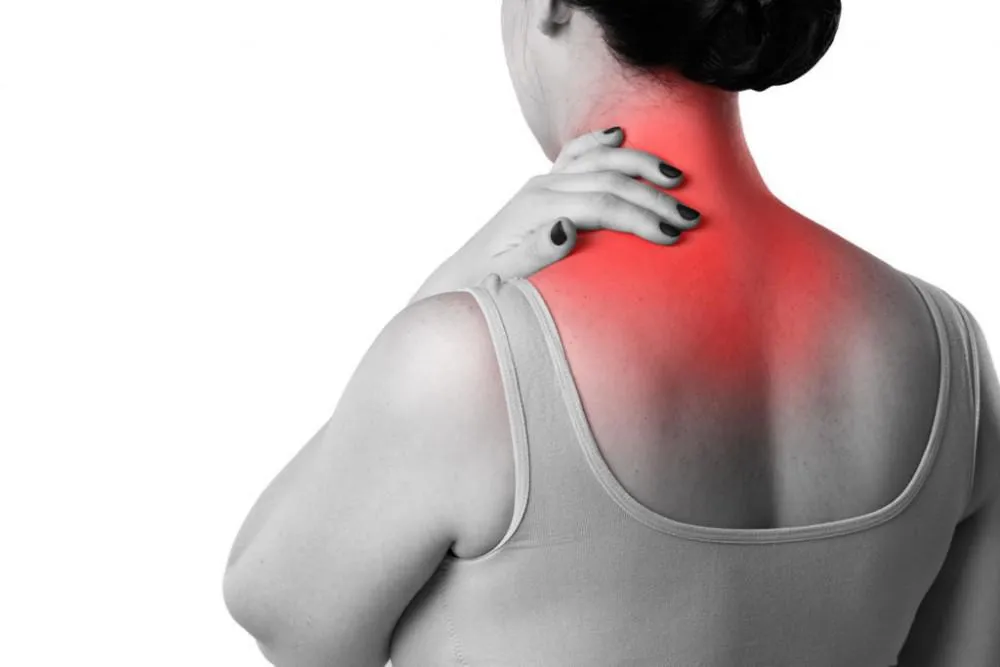Achilles Tendinitis: Symptoms, Causes, Prevention
Achilles tendinitis is a prevalent overuse injury that impacts the Achilles tendon—a critical band of tissue that connects the calf muscles to the heel bone.
Feb. 14, 2024, 7 min read, Articles
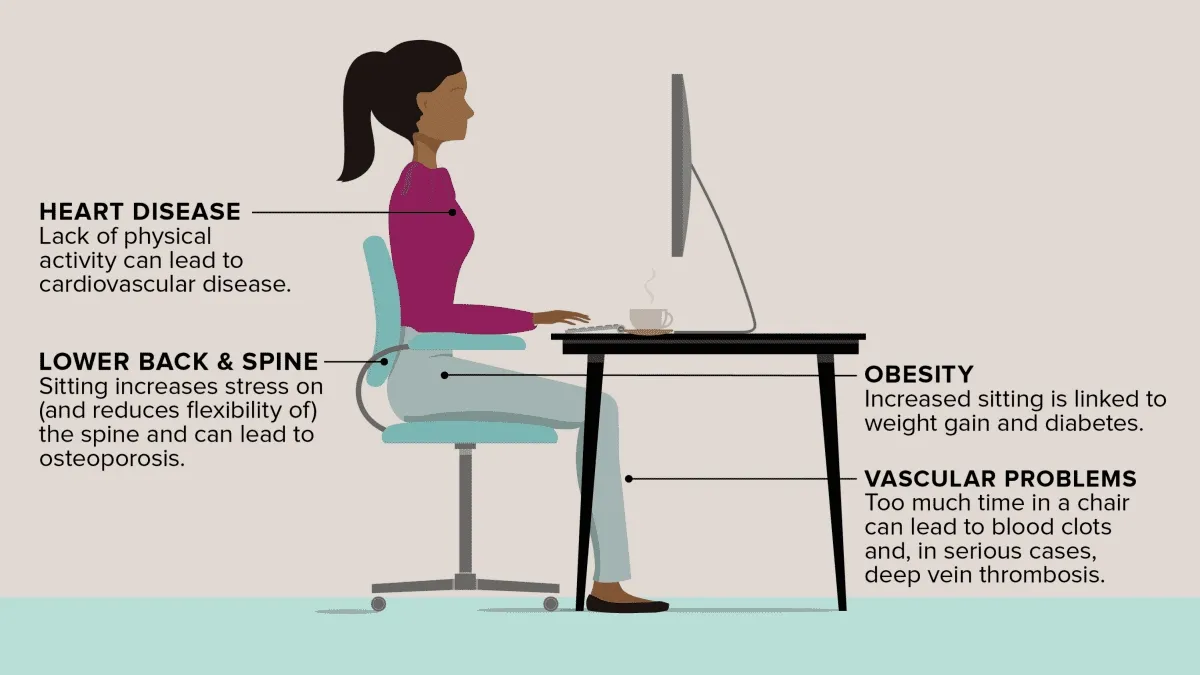
Back pain is a prevalent issue, and while it can stem from various sources, one of the most common culprits is prolonged sitting, especially in poor postures. This article delves into the side effects and consequences of back pain associated with extended periods of inactivity and sitting.
Understanding the nuanced symptoms associated with back pain is akin to deciphering a language spoken by our body, providing crucial insights into the intricacies of discomfort. Delving into this realm unveils the multifaceted impact of prolonged sitting on the back and the diverse ways in which the body communicates distress:
The onset of back pain often manifests as a silent restrictor, limiting routine movements that we often take for granted. Simple acts like bending, walking, or finding a comfortable sleeping position become arduous tasks. Recognizing this limitation serves as an initial cue to the underlying strain imposed by prolonged sitting on the intricate structures of the spine.
Back pain's influence is not confined to the lumbar region alone; it extends its reach, causing discomfort that resonates in the legs. The emergence of leg pain signifies a pervasive impact, affecting overall mobility and signaling that the repercussions of prolonged sitting transcend localized discomfort.
As back pain intensifies, it introduces a subtler yet profound language – numbness, weakness, and tingling sensations in the limbs. These sensations, indicative of potential nerve involvement, paint a more intricate picture of the toll taken on the nervous system by prolonged periods of inactivity.
Back pain may manifest as a radiating discomfort that extends beyond the immediate area of discomfort. This radiation can lead to pain in other regions, such as the hips or shoulders, creating a web of interconnected discomfort that underscores the systemic impact of prolonged sitting.
Prolonged sitting often induces subtle postural changes as the body attempts to alleviate discomfort. Individuals may unknowingly shift their posture to find a more tolerable position, leading to misalignments and exacerbating the strain on the spine and supporting structures.
Persistent back pain can disrupt sleep patterns, making it challenging to find a comfortable sleeping position. Sleep disturbances further contribute to the cycle of discomfort, impacting overall well-being and daily functioning.
Chronic back pain can have emotional repercussions, contributing to stress, anxiety, or feelings of frustration. Understanding the emotional toll is crucial, as it underscores the holistic impact of back pain on an individual's overall quality of life.
Interpreting the signs of discomfort becomes a collaborative effort with the therapeutic guidance of physiotherapy and osteopathy. These therapeutic approaches empower individuals to understand and respond to the messages their bodies communicate. Acting as a roadmap for proactive intervention, these modalities prompt a thorough examination of daily habits, posture, and the necessity for ergonomic adjustments.
As individuals acknowledge these symptoms, they not only grasp the immediate physical impact but also attain valuable insights into the potential long-term repercussions of neglecting back health. The language of discomfort serves as a compelling call to action, urging individuals to be responsive to these signals and embark on a journey toward proactive measures. This encompasses embracing ergonomic changes, incorporating regular movement into daily routines, and, when necessary, seeking the expertise of physiotherapy and osteopathy professionals. By unraveling this language, individuals regain command over their back health, setting the stage for a lifestyle characterized by reduced pain and enhanced comfort.
In addition to improving your posture when sitting, try these at-home remedies for lower back pain:
There are several exercises that will help strengthen your lower back. Try these three stretching exercises to help make your back stronger and better toned:
Addressing back pain induced by extended periods of sitting necessitates a nuanced and comprehensive treatment approach. Delving into the intricate landscape of therapeutic interventions, we uncover a spectrum of strategies designed to not only alleviate immediate discomfort but also foster long-term spinal health.
Physiotherapy emerges as a cornerstone in the treatment paradigm, offering tailored exercises to strengthen core muscles, improve flexibility, and correct postural imbalances. Guided by physiotherapists, individuals embark on a journey of targeted movements designed to counteract the effects of prolonged sitting, promoting a resilient and well-supported spine.
Osteopathy, with its holistic philosophy, delves into the interconnectedness of the body, aiming to restore balance and harmony. Through hands-on techniques, osteopaths work to release tension, improve joint mobility, and enhance overall musculoskeletal function. This integrative approach addresses not only the symptoms but also the root causes of back pain.
A pivotal aspect of treatment involves reevaluating the ergonomics of daily environments. From office chairs to workstations, making ergonomic adjustments plays a vital role in mitigating the impact of prolonged sitting. Simple modifications can alleviate strain on the spine and contribute to a more back-friendly environment.
Incorporating mindful movement practices, such as yoga or Pilates, proves beneficial in promoting flexibility and enhancing body awareness. These practices not only serve as therapeutic exercises but also encourage a holistic approach to wellness, fostering a mindful connection between the body and mind.
For immediate relief, pain management strategies, including targeted medications or topical treatments, may be employed under the guidance of healthcare professionals. These interventions aim to provide temporary respite while more comprehensive therapeutic measures take effect.
An integral part of the treatment plan involves adopting lifestyle modifications that promote a more active and dynamic daily routine. Encouraging regular breaks from sitting, integrating stretching exercises, and cultivating a habit of maintaining good posture contribute to the overarching goal of sustained back health.
The treatment landscape for back pain resulting from prolonged sitting is diverse and dynamic, emphasizing a personalized and holistic approach. By embracing a combination of physiotherapy, osteopathy, ergonomic adjustments, mindful movement, and proactive lifestyle changes, individuals navigate a path to recovery that extends beyond symptom alleviation. This multifaceted strategy aims not only to address the immediate discomfort but also to cultivate enduring spinal well-being, empowering individuals to reclaim control over their back health and embark on a journey towards a pain-free and active lifestyle.
Understanding the impact of prolonged sitting on back health is a critical step toward mitigating potential complications. By acknowledging the strain imposed by prolonged periods of inactivity, individuals can take proactive measures to optimize their workspace, introduce regular movement into their routine, and seek timely medical guidance when faced with persistent back pain. Prioritizing back health today is an investment in a more comfortable and pain-free tomorrow.
Achilles tendinitis is a prevalent overuse injury that impacts the Achilles tendon—a critical band of tissue that connects the calf muscles to the heel bone.
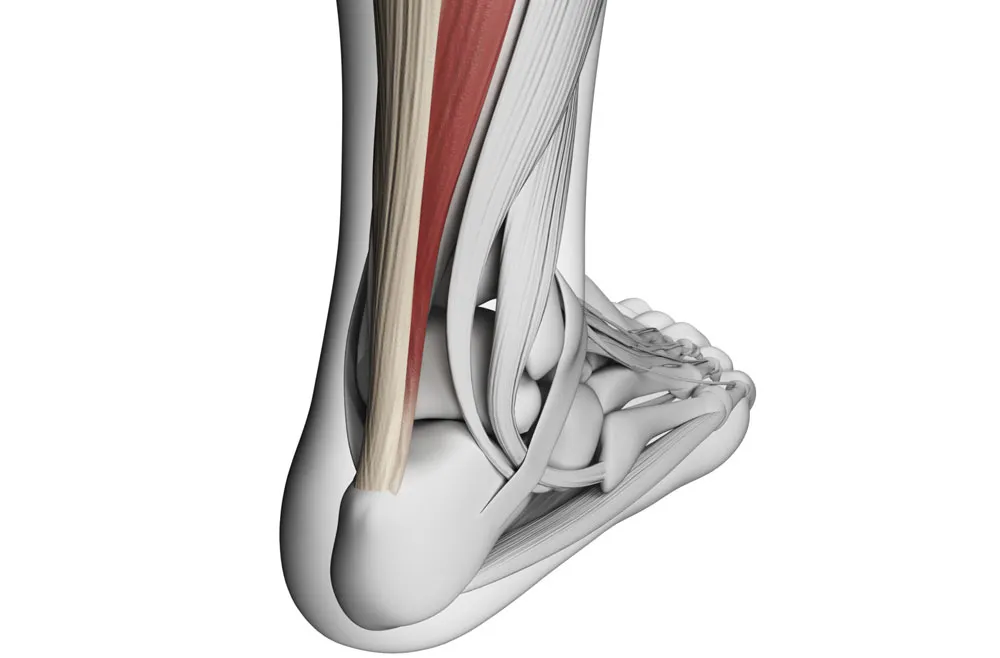
Back pain is a prevalent and often debilitating condition that can affect individuals of all ages and walks of life.
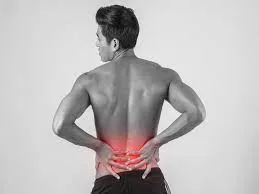
Arthritis is a common and often painful condition that affects millions of individuals worldwide. It's not a single disease but rather a group of more than 100 different types of joint-related conditions.
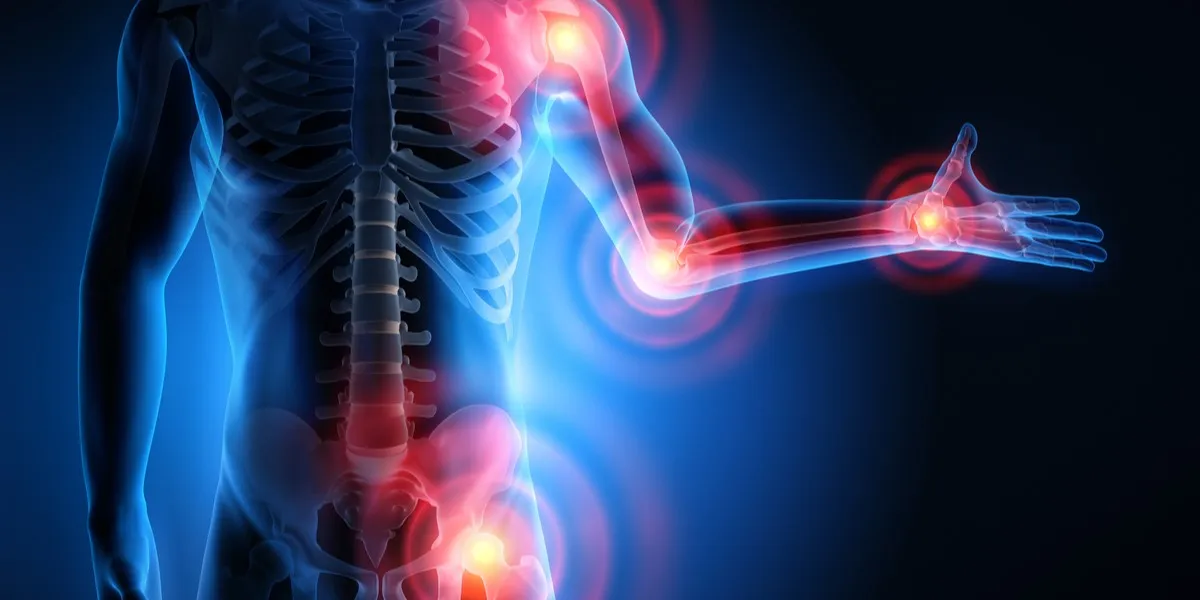
Ankle injuries are prevalent in the world of sports and can be a significant setback for athletes.
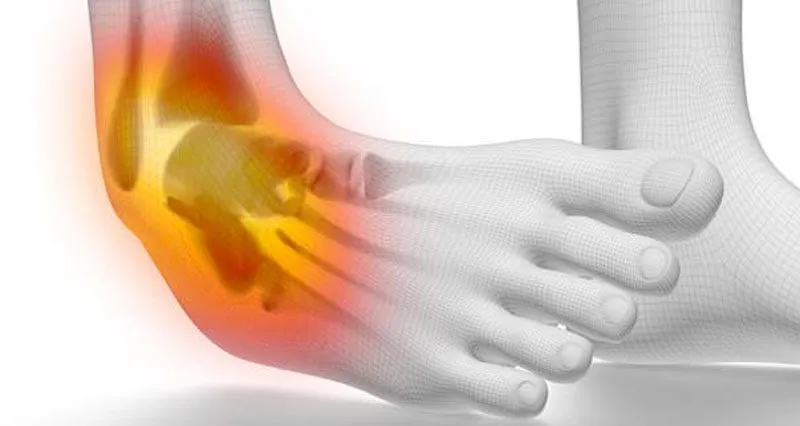
Amyotrophic Lateral Sclerosis (ALS), often referred to as Lou Gehrig's disease, is a progressive neurodegenerative disorder that affects nerve cells in the brain and spinal cord.
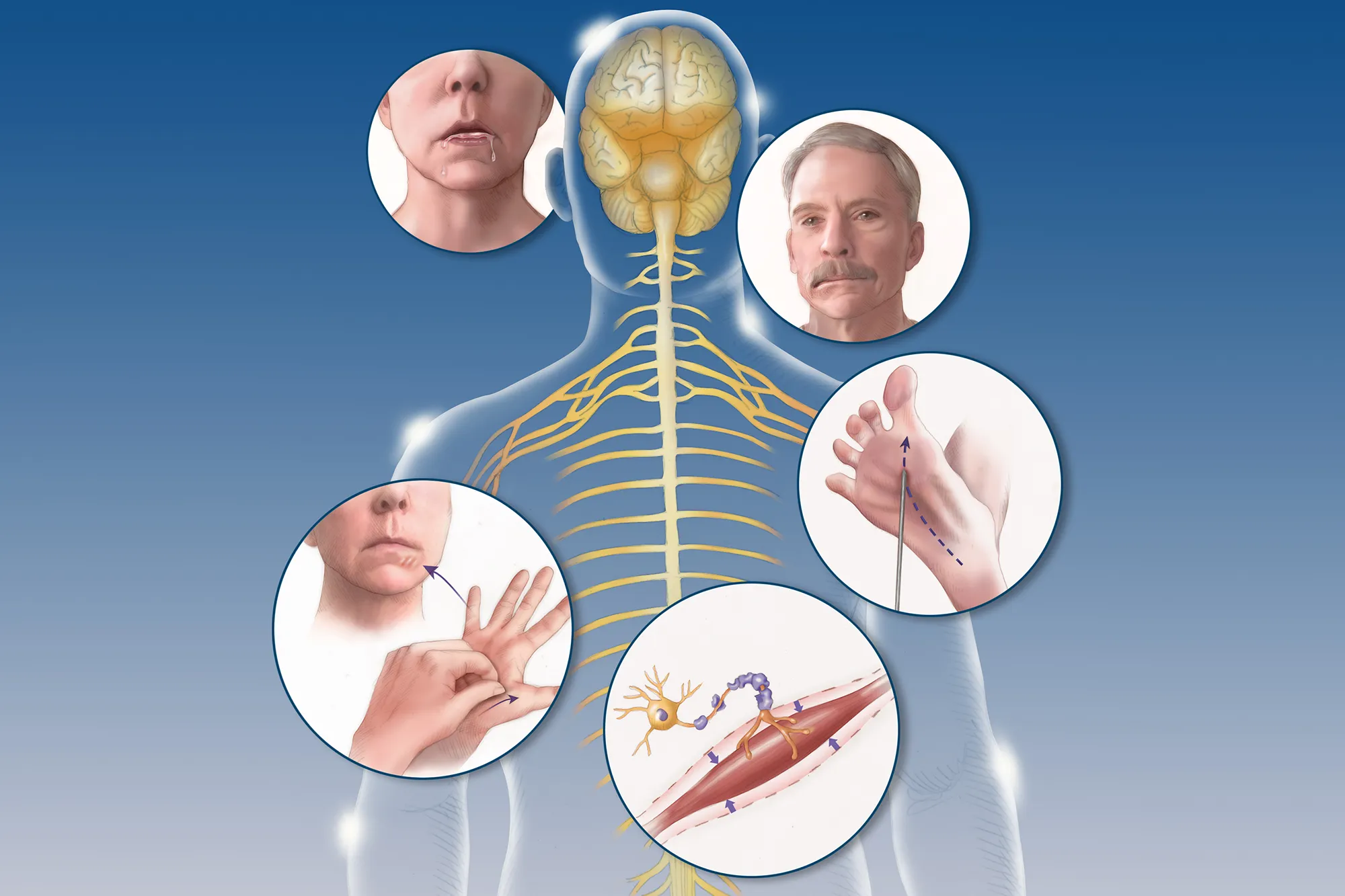
Degenerative Disc Disease (DDD) is a common condition that affects the intervertebral discs in the spine.
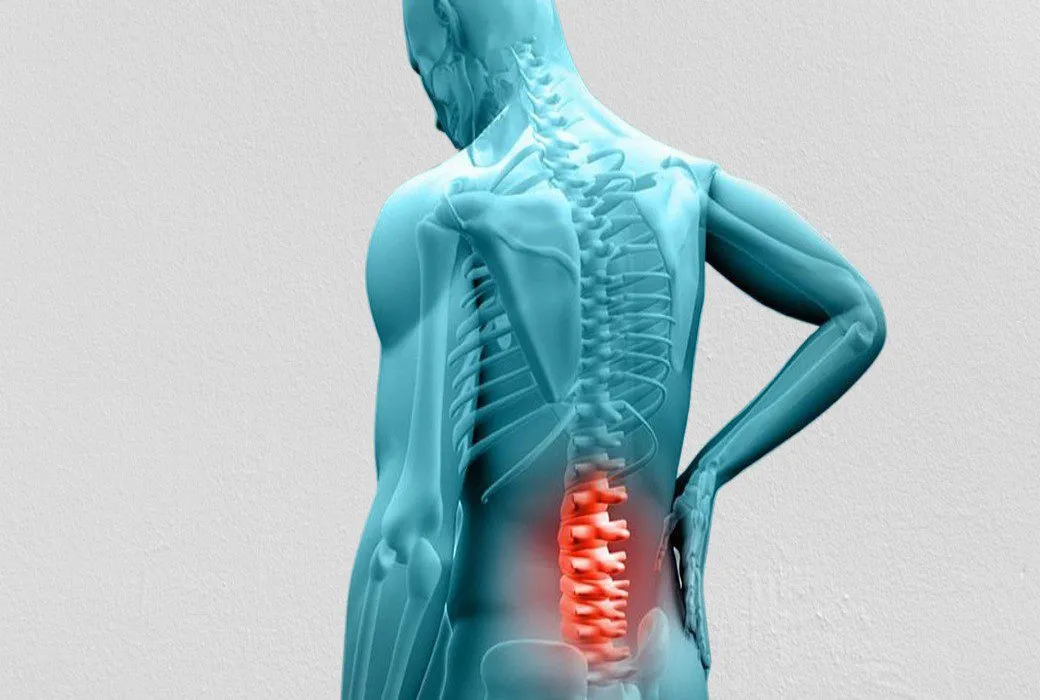
Myalgic Encephalomyelitis/Chronic Fatigue Syndrome (ME/CFS) is a perplexing and debilitating condition that impacts individuals, often altering their daily lives and challenging conventional understanding.
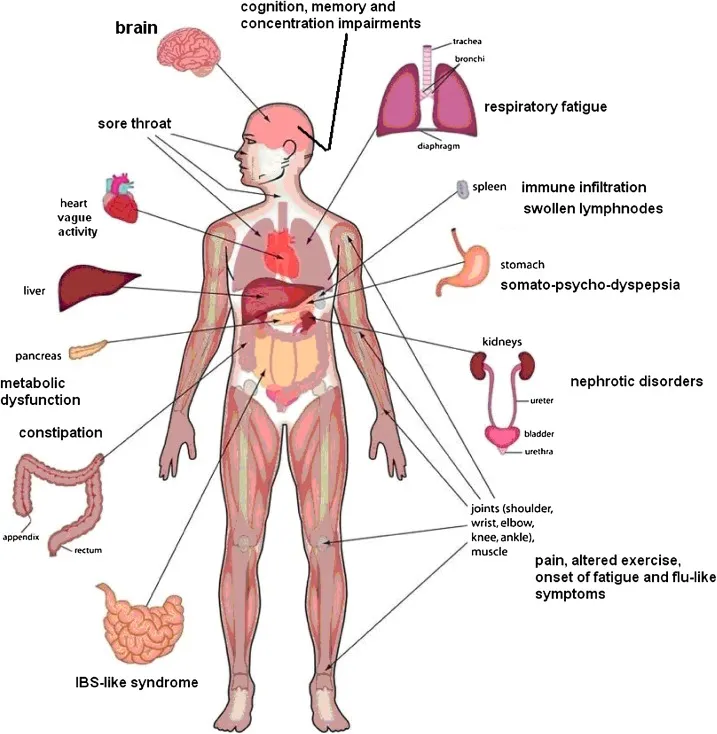
Muscular dystrophy encompasses a group of diseases leading to progressive muscle weakness and loss of muscle mass. The development of abnormal genes disrupts the production of necessary proteins crucial for healthy muscle function.
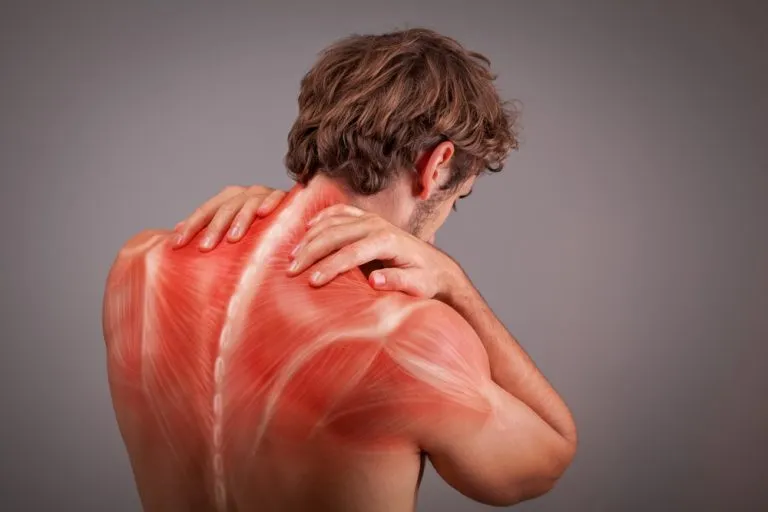
Fibromyalgia stands as a complex and often misunderstood condition characterized by widespread musculoskeletal pain, fatigue, and sleep disturbances
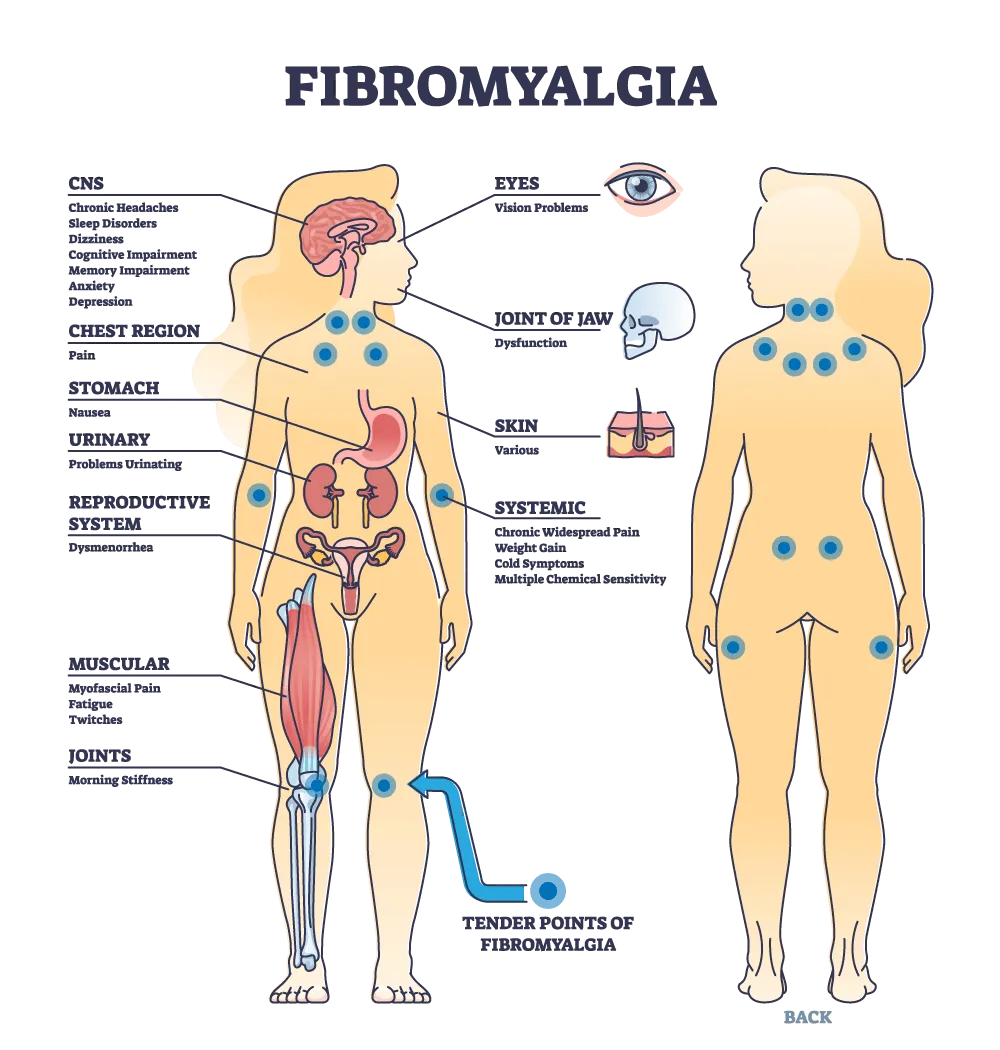
Bunions, medically referred to as "hallux valgus," are a common and often painful foot deformity that affects the joint at the base of the big toe.
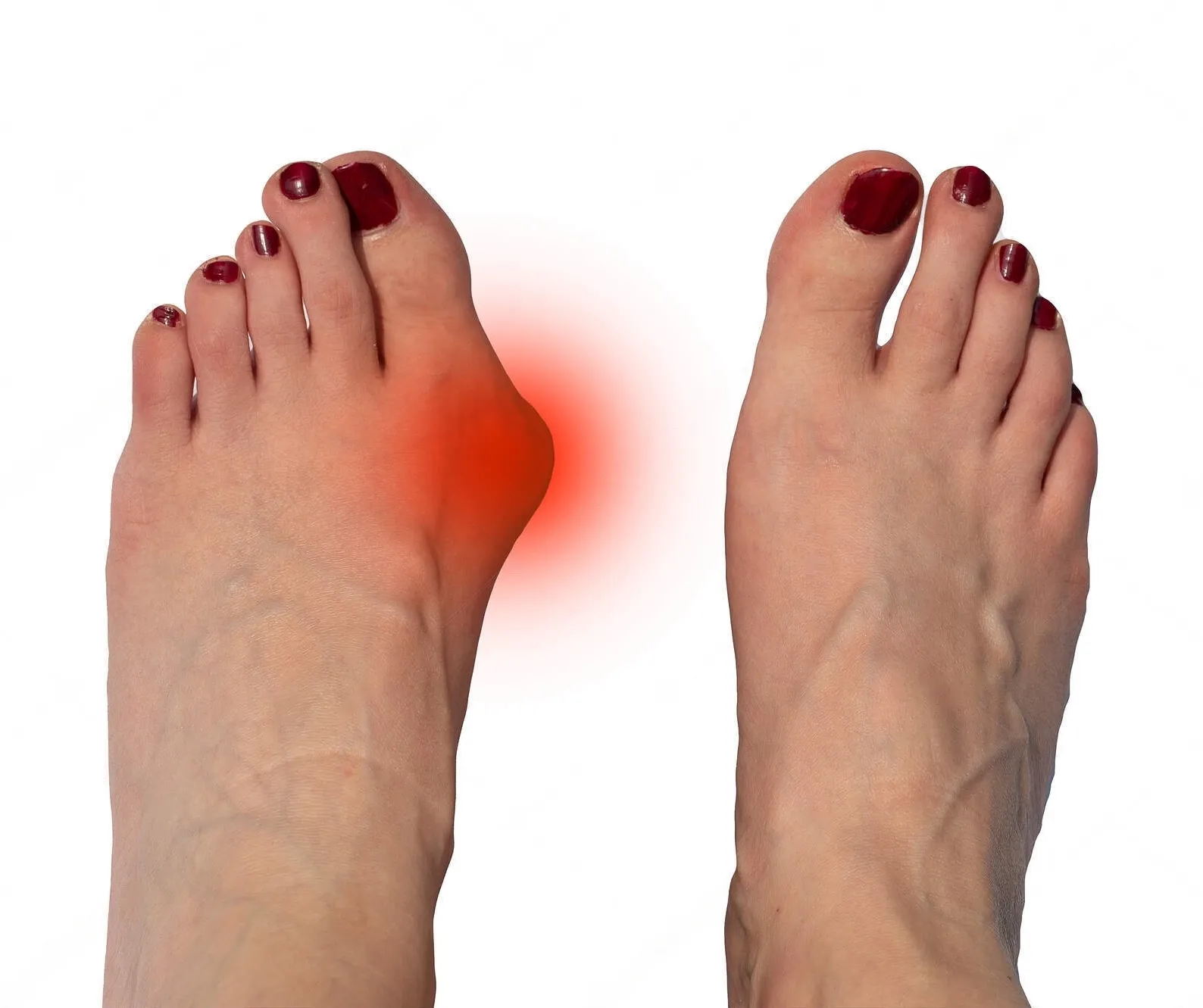
Herniated disc symptoms can be debilitating, causing pain, numbness, and mobility limitations.
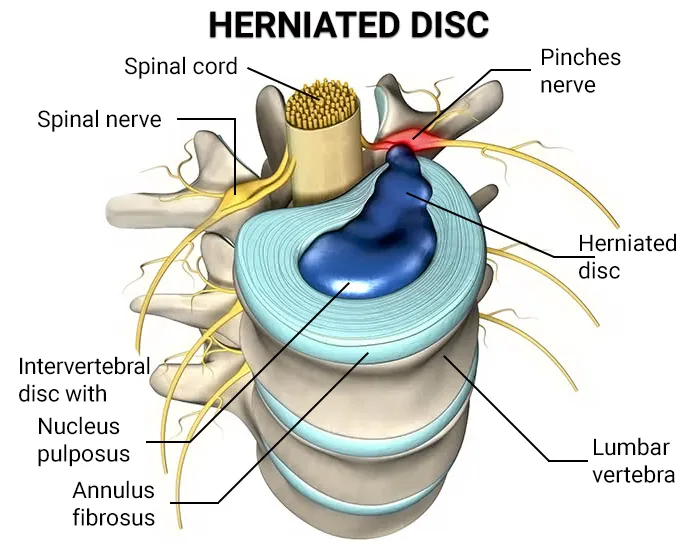
A heel spur is a bony growth that pokes out below your back heel bone inside of your foot. Heel spurs happen when stress and strain damages your foot ligaments.
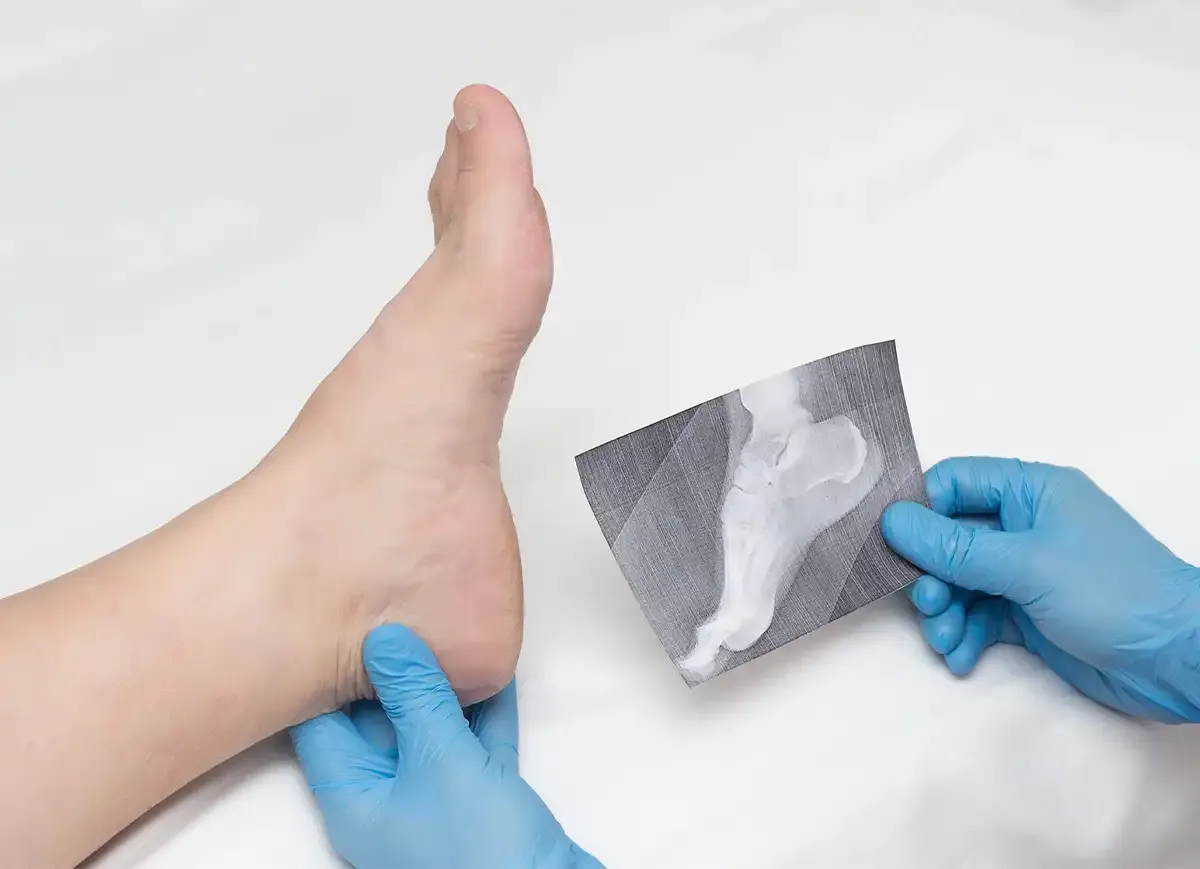
Knee pain is a widespread issue that can significantly impact a person's mobility and quality of life.Knee pain is a widespread issue that can significantly impact a person's mobility and quality of life.
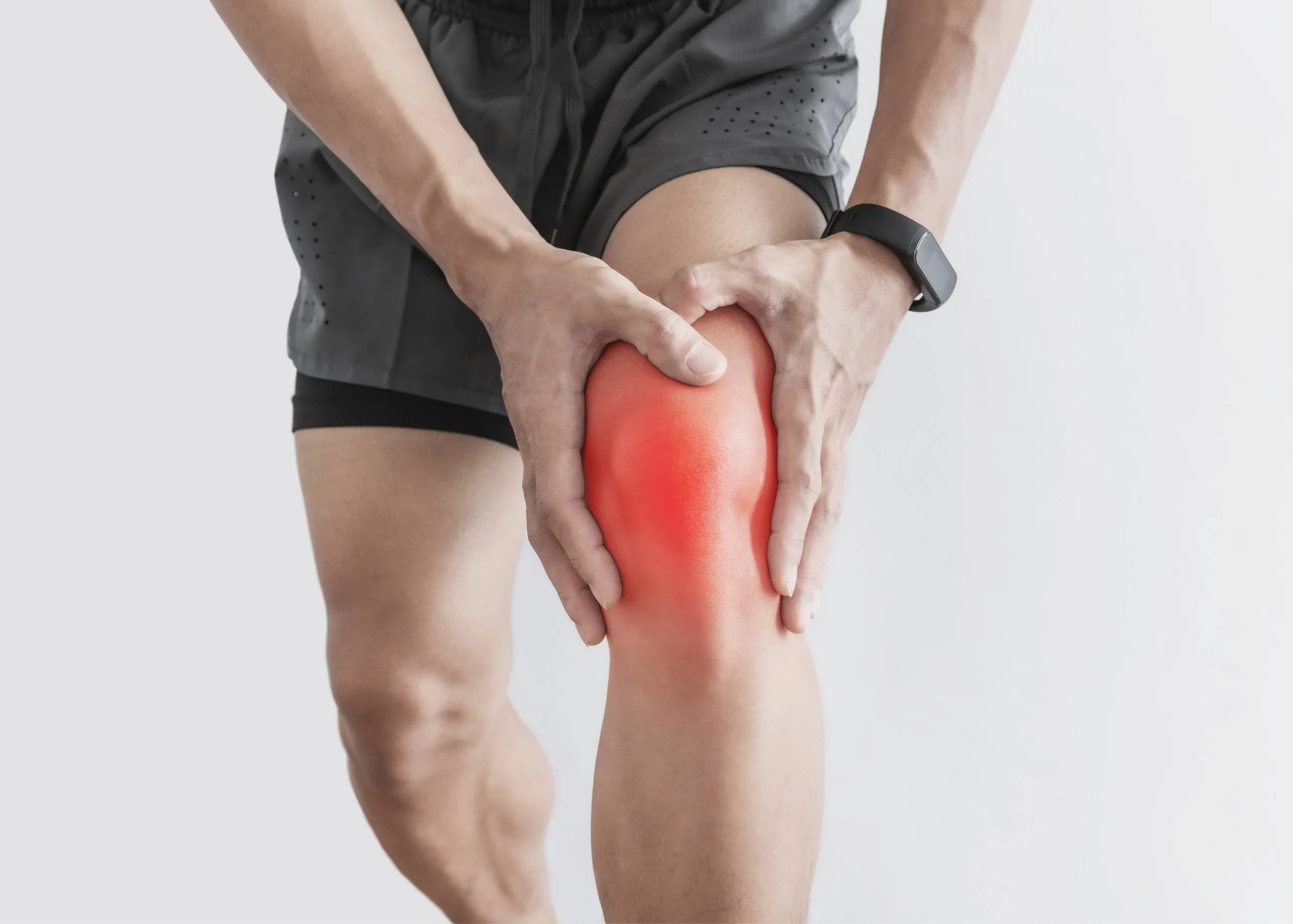
Heel pain can be a nagging and uncomfortable issue that affects many people. In this article, we will explore the various causes of heel pain, common symptoms associated with it, and the available treatments that can help you find relief and get back to your active lifestyle.
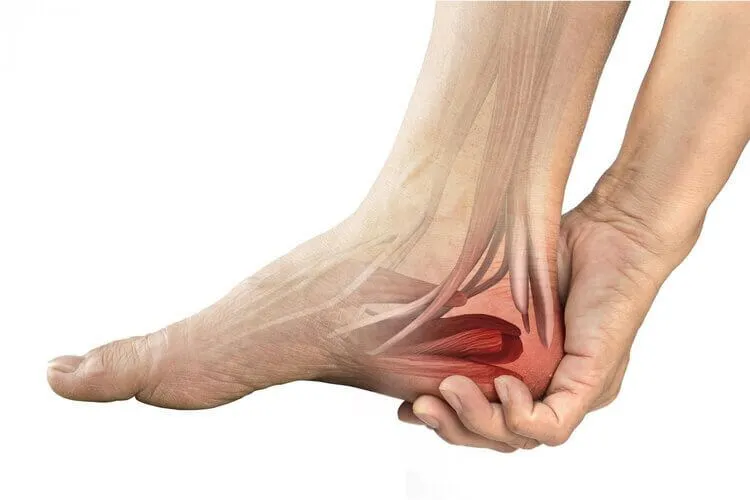
Military Neck, also referred to as Cervical Kyphosis, is a condition that affects the natural curvature of the cervical spine, resulting in the loss of its typical curve.
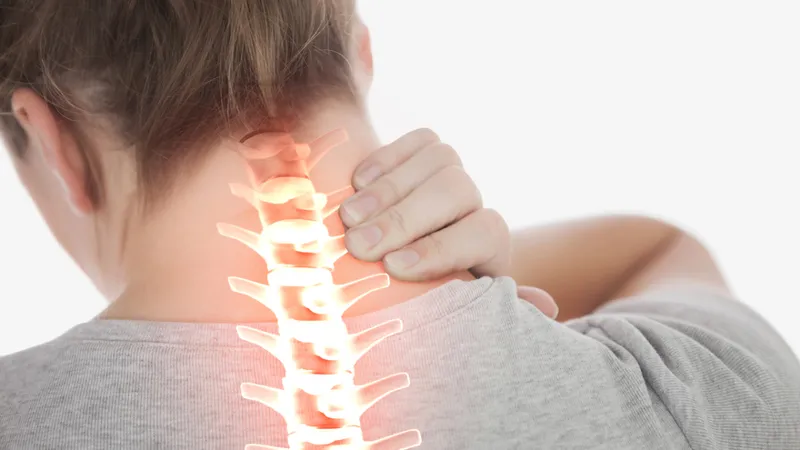
Migraines and headaches are prevalent neurological disorders that affect a significant portion of the population.
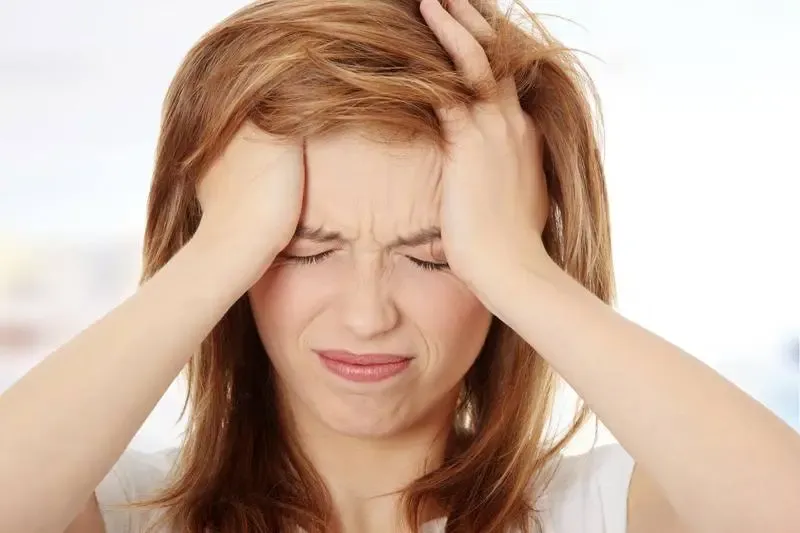
Lymphedema is a chronic condition characterized by the accumulation of lymphatic fluid, leading to persistent swelling, typically in the arms or legs.
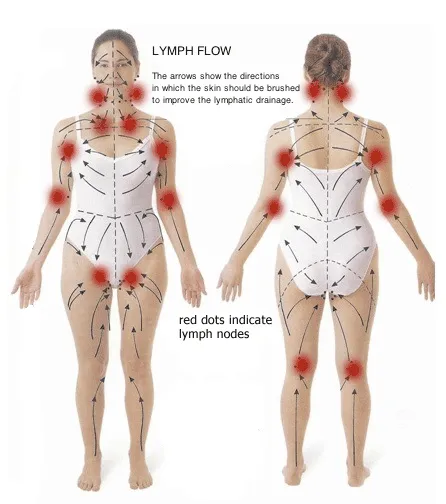
Plantar fasciitis is a common and often painful foot condition that affects millions of people worldwide.
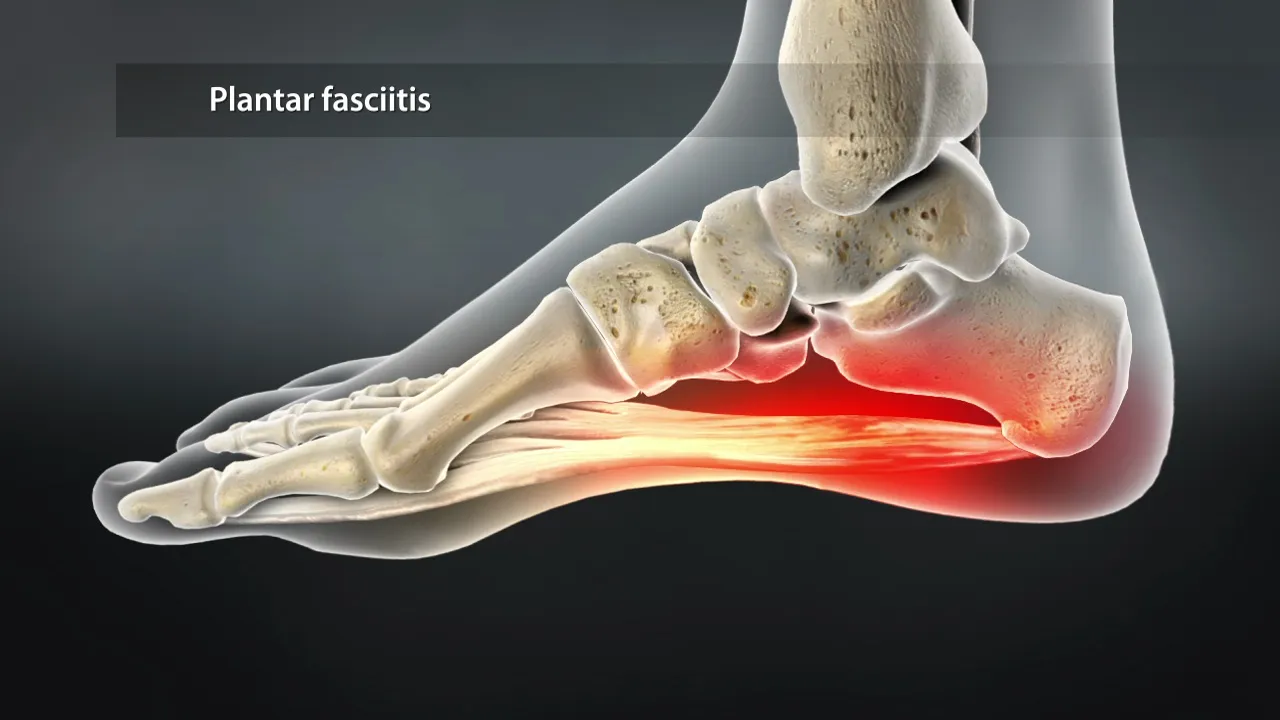
Piriformis syndrome is a perplexing condition, often overshadowed by more common sources of hip and lower back pain.
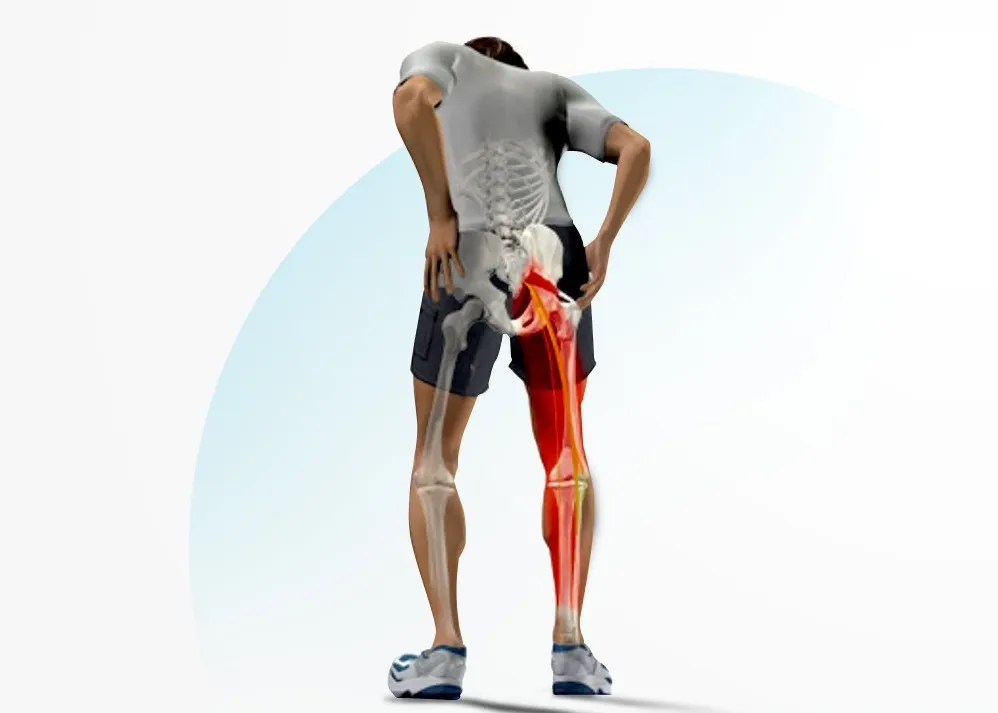
motor vehicle accidents (MVA) can result in a wide range of injuries, from minor bruises to severe trauma. in the aftermath of such incidents, seeking prompt medical attention is crucial for assessing and addressing any injuries sustained.

Sarcopenia is the gradual loss of muscle mass that can affect people in their 30s and beyond. WebMD explains its symptoms, causes, diagnosis, and treatments.
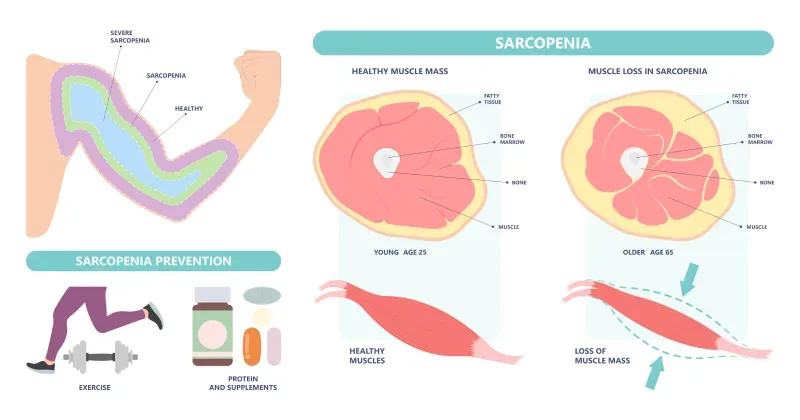
Spinal stenosis, a prevalent spinal condition, is characterized by the narrowing of the spinal canal, leading to discomfort and neurological symptoms.

The sacroiliac joint, a crucial junction between the sacrum and the ilium bones in the pelvis, plays a pivotal role in supporting the weight of the upper body.
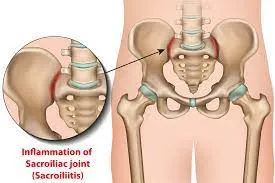
A rotator cuff injury can be a painful and limiting condition, impacting the functionality of the shoulder.
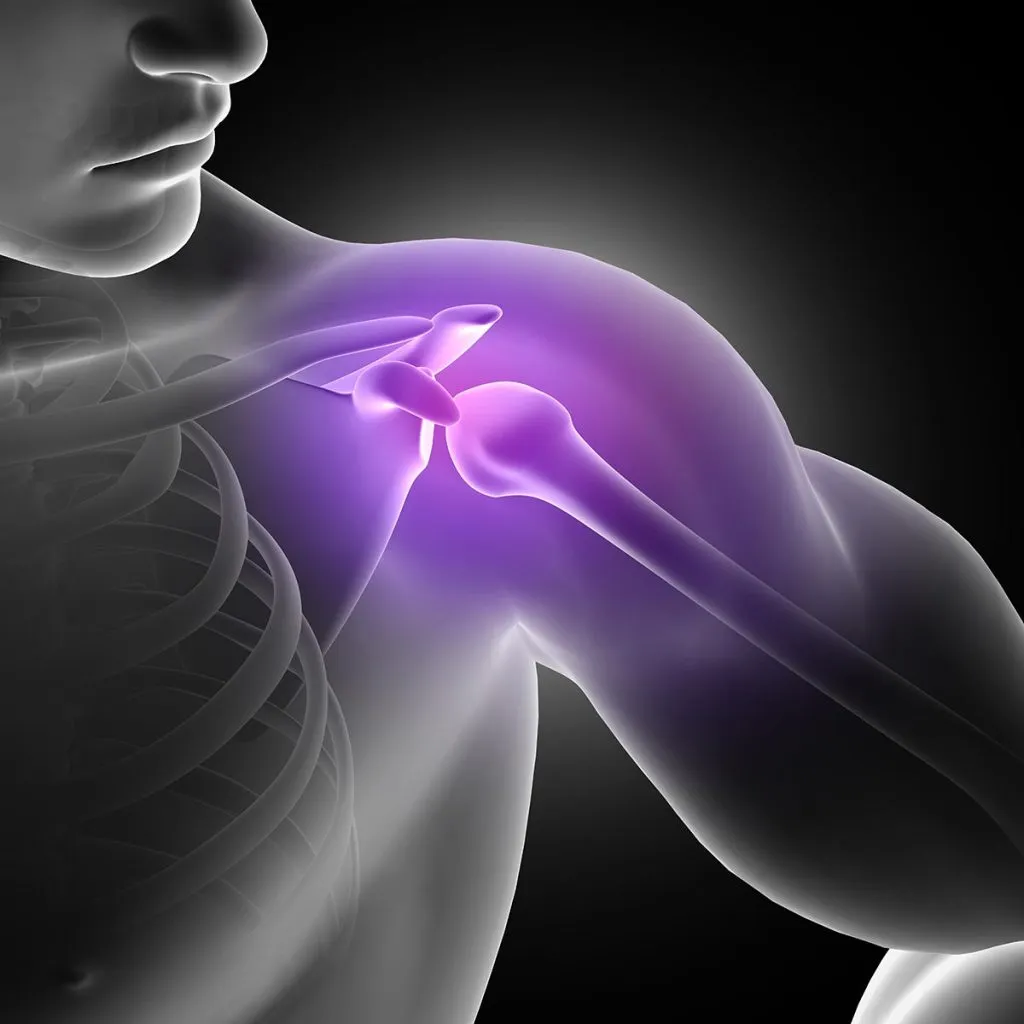
Sciatica is a painful and often debilitating condition that affects numerous individuals worldwide.
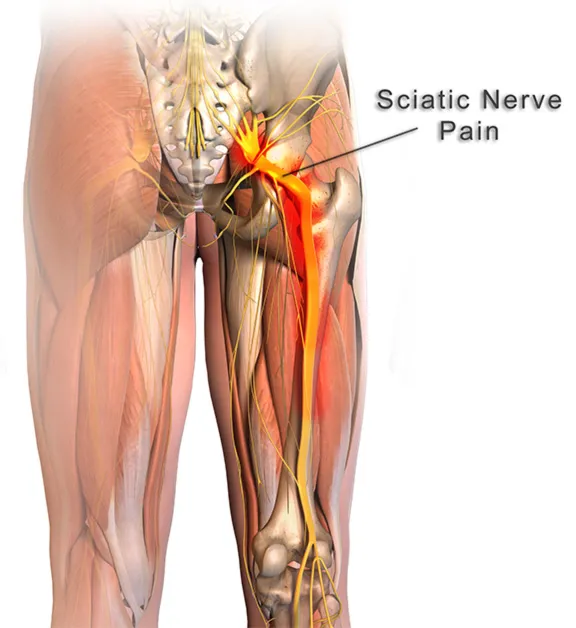
Gluteal tendinopathy is a condition that affects the tendons in the gluteal region, leading to pain and restricted mobility.
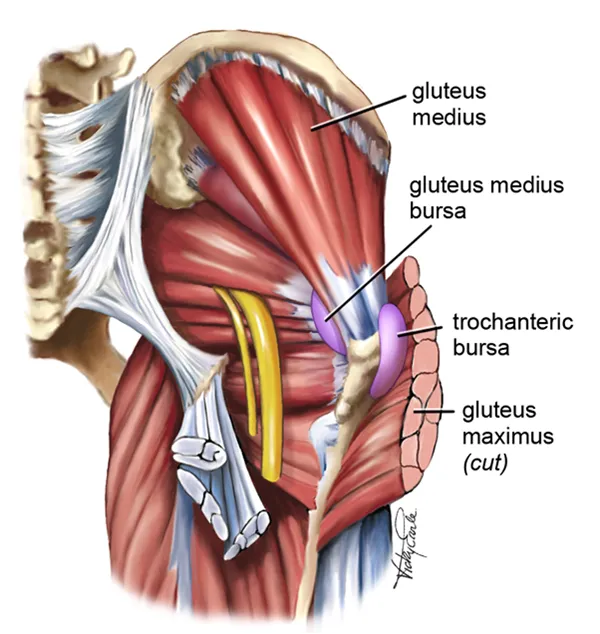
Tennis Elbow, also known as Lateral Epicondylitis, is a painful condition that affects the tendons in the forearm, causing discomfort and limited mobility in the elbow and wrist.

The temporomandibular joint (TMJ) serves as a pivotal mechanism, allowing us to perform everyday activities such as speaking, chewing, and yawning with ease. However, when this complex joint encounters issues, it can lead to Temporomandibular Joint Syndrome (TMJ syndrome).
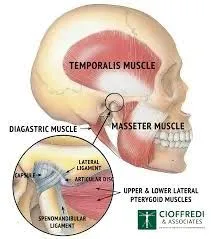
Tarsal Tunnel Syndrome (TTS) is a common and often painful condition affecting the tarsal tunnel—a narrow passage in the ankle.
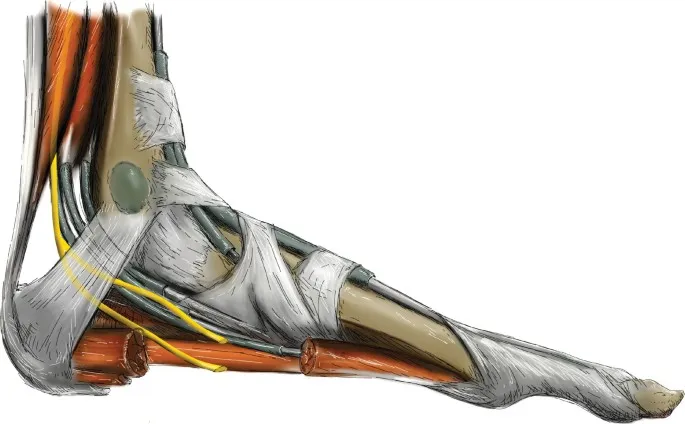
Explore the impact of time-restricted eating on heart health. Learn about the connection between diet and cardiovascular risk.
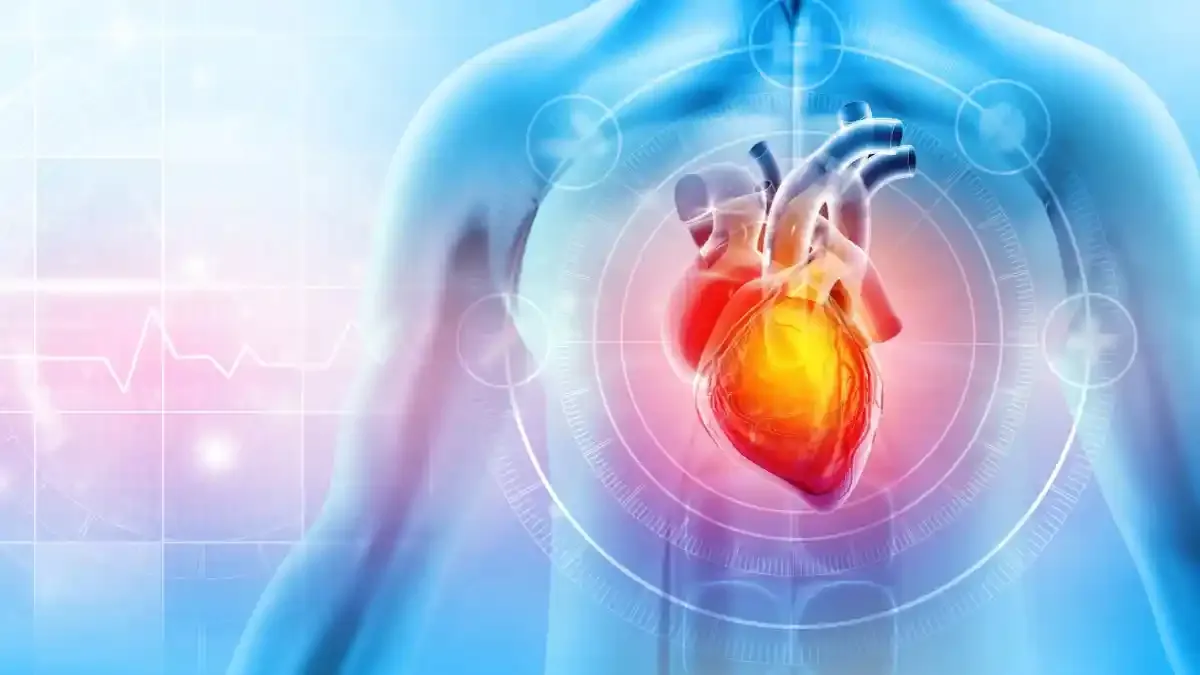
Most cases of foot or ankle pain are short term and are caused by soft tissue injuries, such as sprains or strains. You can usually ease the pain yourself But see York Rehab Clinic if the pain does not improve.
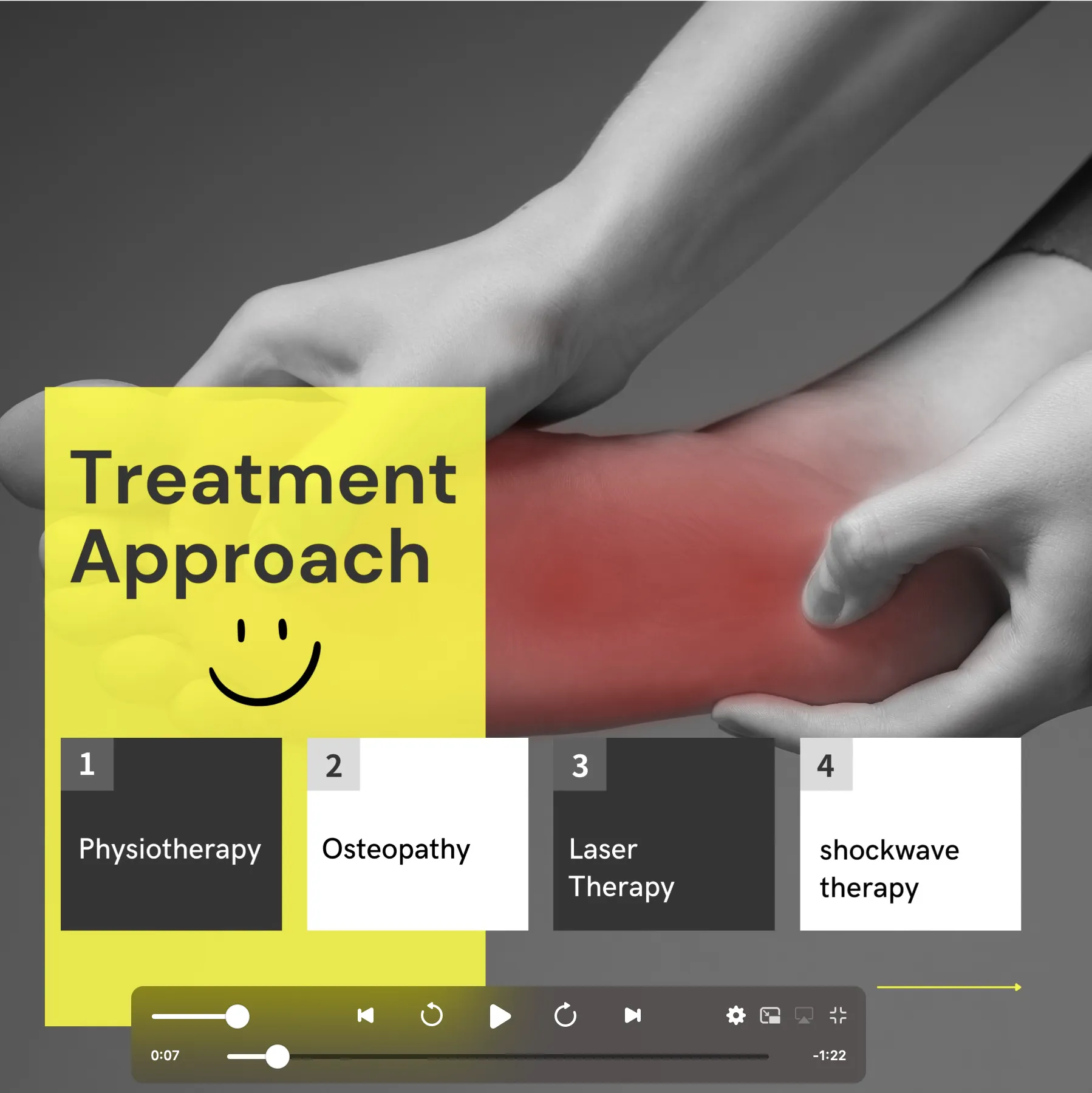
Bow legs is a genetic condition where the knees bow outward when standing. Learn its symptoms and causes at York Rehab Clinic.
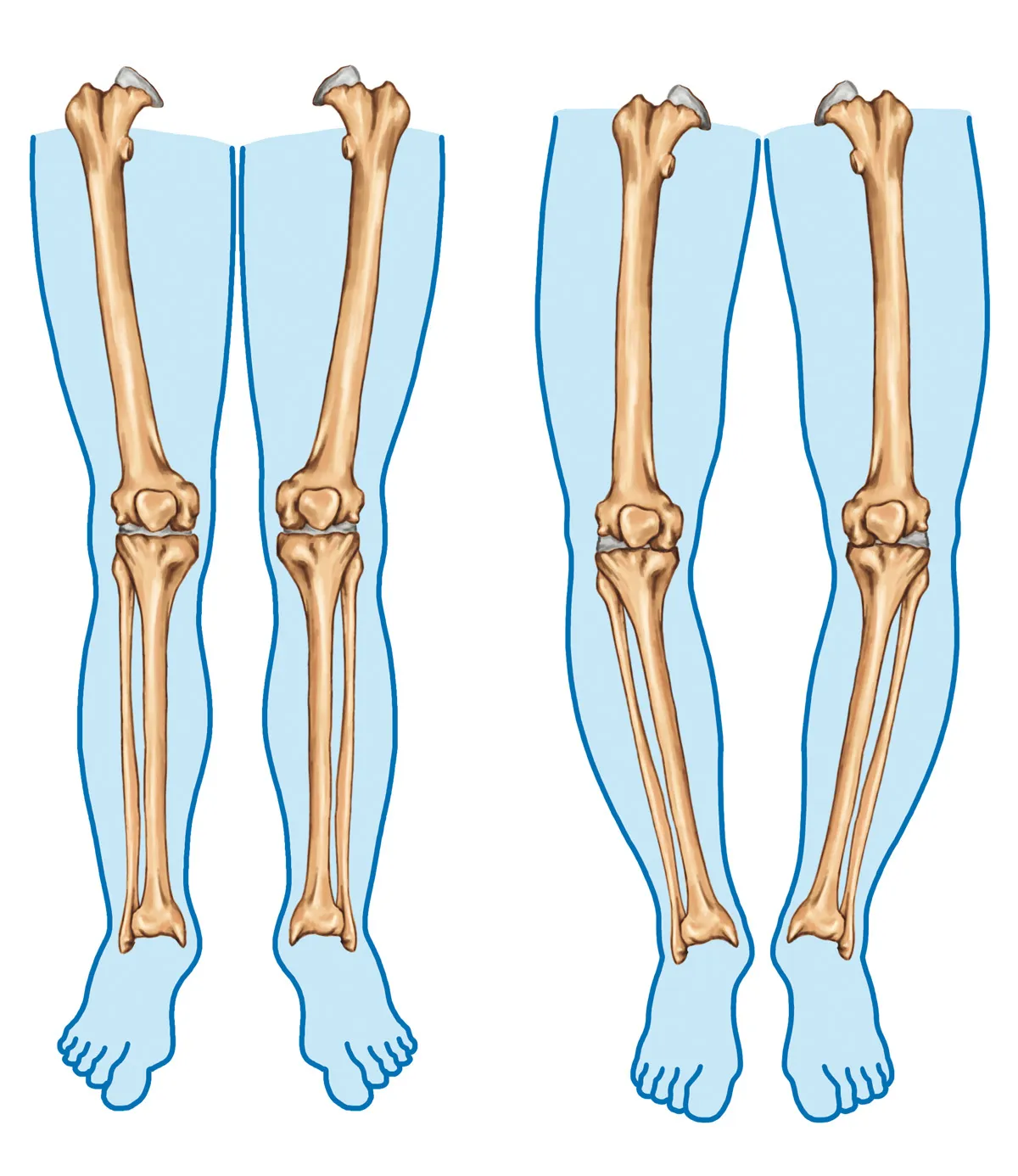
This article explores the complexities of Parkinson’s Disease and sheds light on the therapeutic benefits offered by osteopathy and physiotherapy.
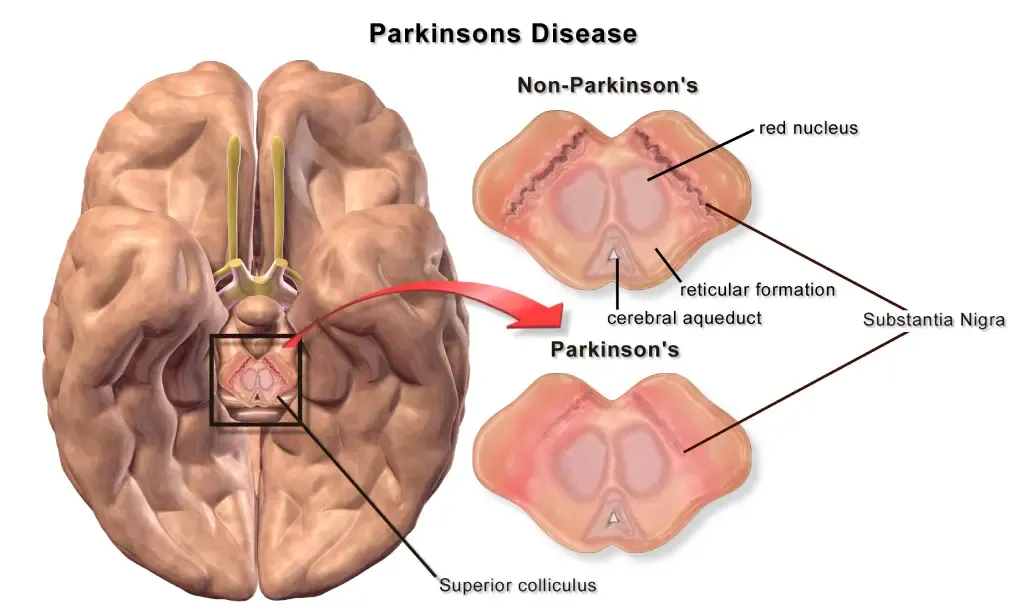
Cervical spondylosis, a prevalent condition, unfolds as a result of wear and tear on the spinal discs in the neck.
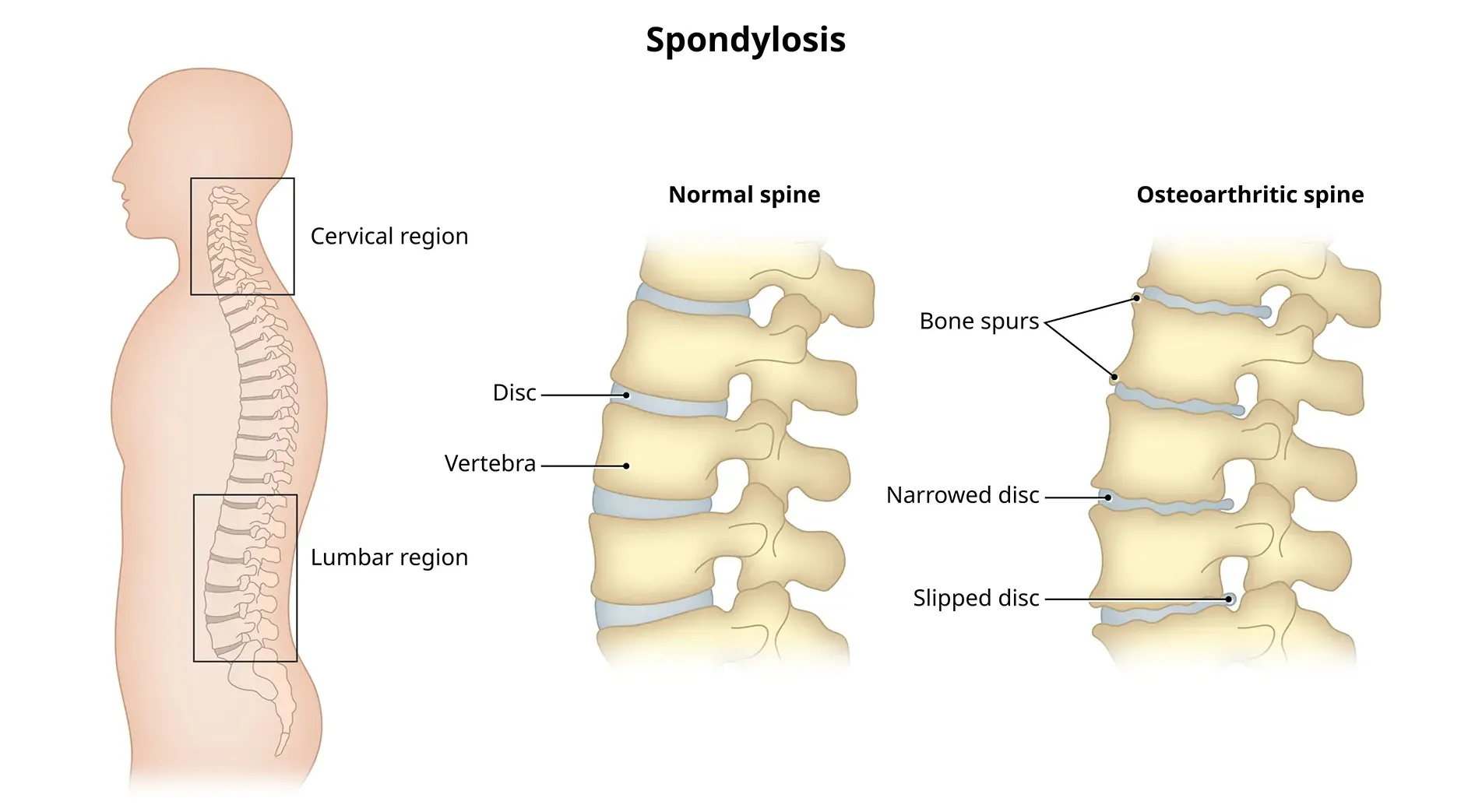
A dowager’s hump, a curve at the base of your neck, can cause extreme fatigue, back pain and headaches.
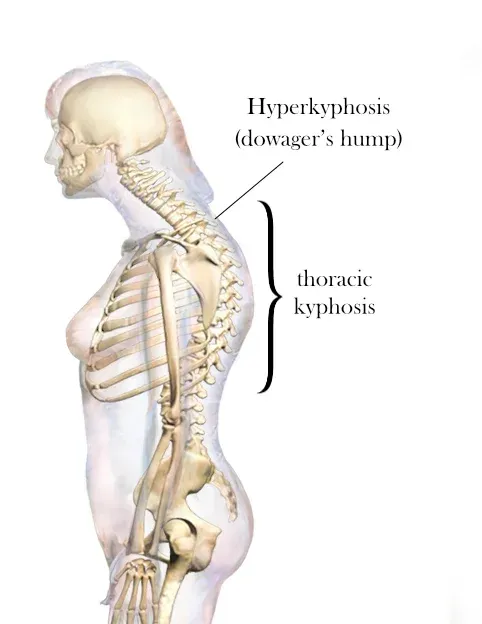
Flat feet cause pain, muscle strain, and fatigue. Treatments can ease discomfort. Symptoms include ankle pain, muscle fatigue and changes in walking.
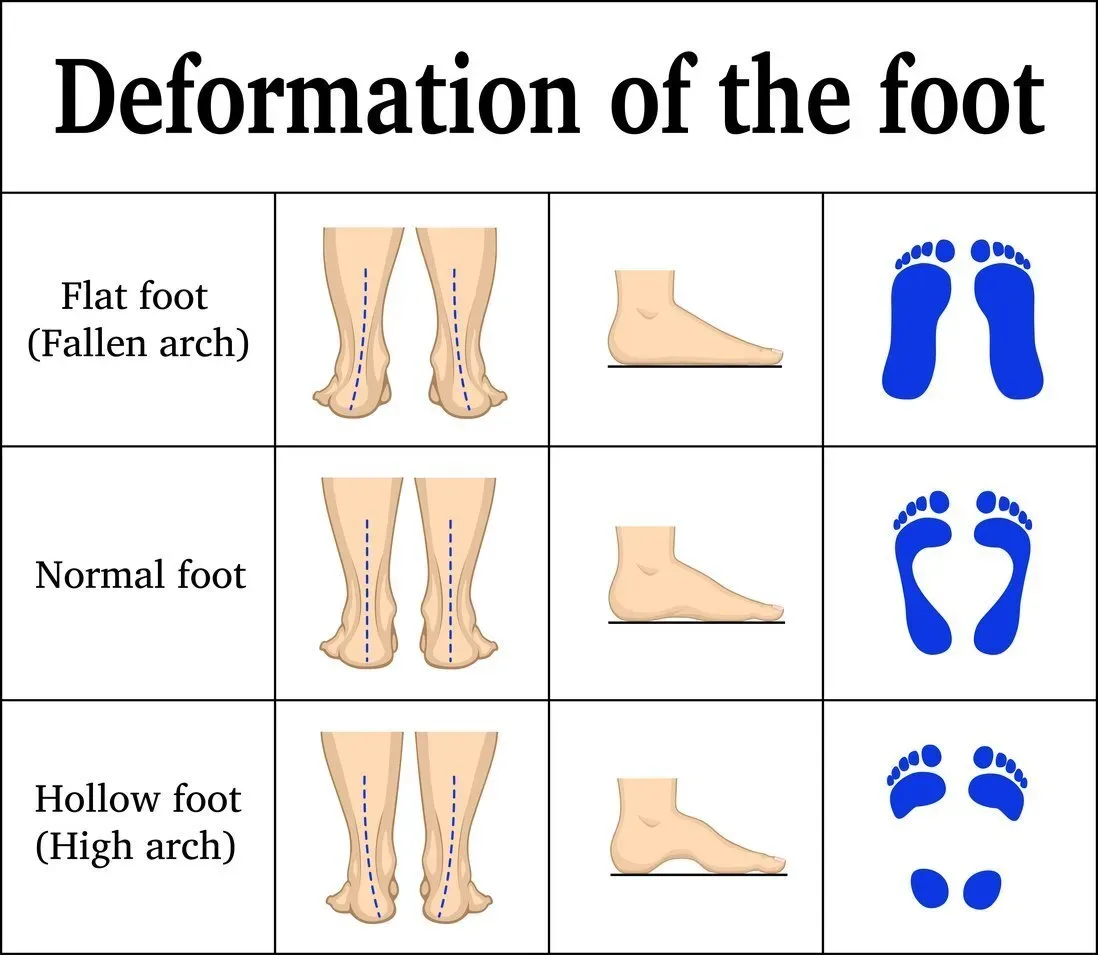
Traumatic brain injury (TBI) often results from a violent blow or jolt to the head or body, causing various physical and psychological effects.
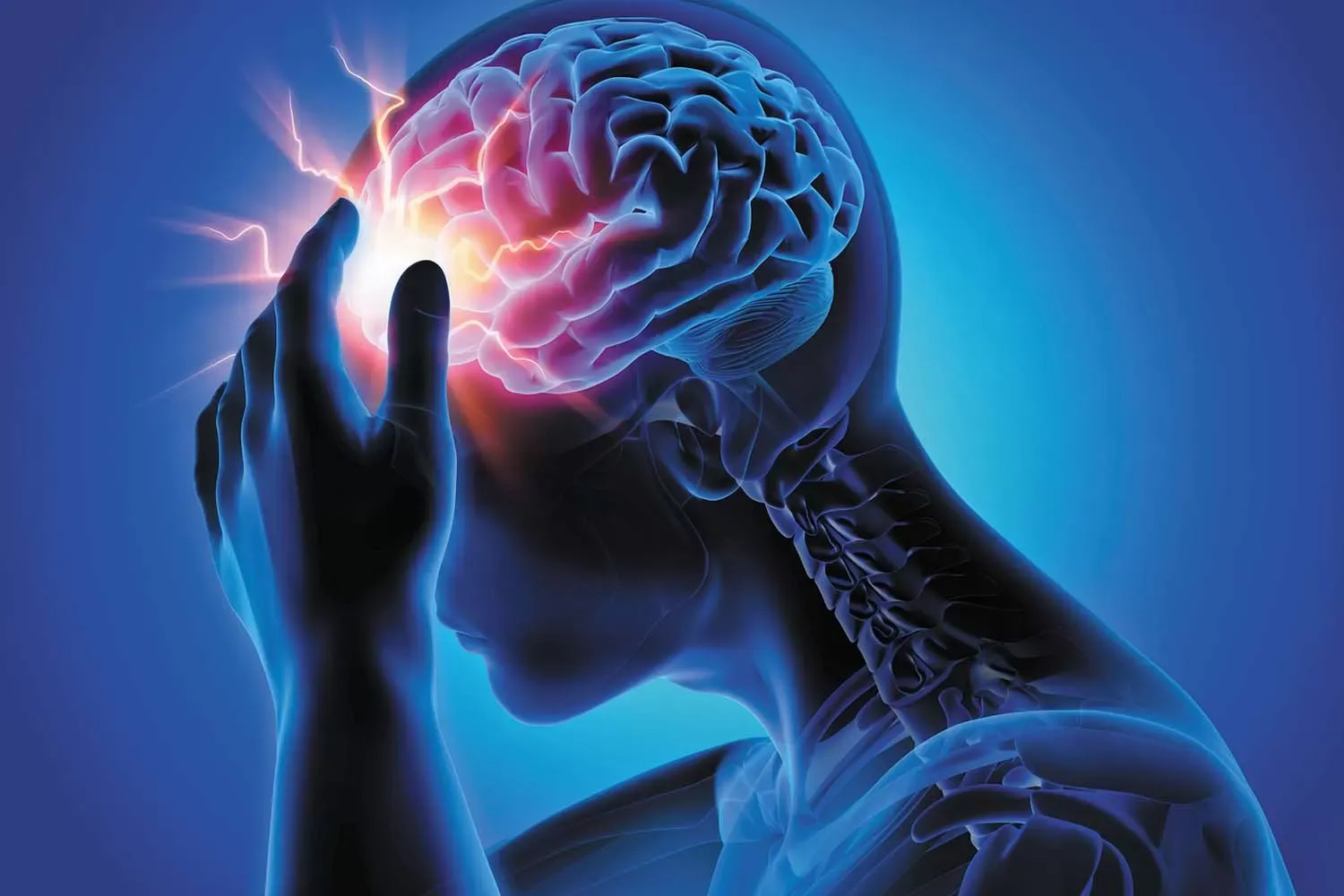
Introduction: Neck stiffness can be a discomforting and limiting condition that affects people of all ages.
